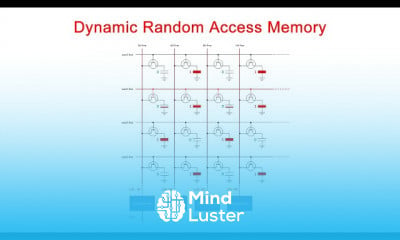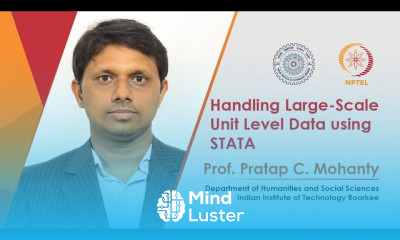postfix expression evaluation algorithm example program
Share your inquiries now with community members
Click Here
Sign up Now
Lesson extensions
Lessons List | 105
Lesson
Show More
Lessons
Comments
Related Courses in Computer Science
Course Description
Data structure types course,
in this course we will learn about the Data Structure Types, essential for organizing and managing data efficiently in computer programs. Data structures are foundational to programming and software development, providing ways to store and manipulate data in a structured manner. We will explore a variety of data structures, starting with Arrays, which store elements in contiguous memory locations, allowing for efficient indexing and traversal. Next, we will cover Linked Lists, where elements are stored in nodes connected by pointers, providing flexibility in memory allocation.
We will delve into Stacks and Queues, which are used for managing data with Last-In-First-Out (LIFO) and First-In-First-Out (FIFO) access patterns, respectively. The course will introduce Trees, including Binary Search Trees and Heaps, which facilitate hierarchical data representation and efficient searching and sorting operations. We will also examine Graphs, which model relationships between objects, and Hash Tables, which provide fast data retrieval using key-value pairs.
Advanced data structures like Tries (Prefix Trees), AVL Trees, Red-Black Trees, and B-Trees will be discussed for specialized applications. Additionally, we will explore Sets and Maps for managing collections of unique elements and key-value pairs, respectively. Throughout the course, you will learn about the advantages, use cases, and implementation details of each data structure, along with practical coding examples and exercises.
By the end of this course, you will have a comprehensive understanding of various data structure types, enabling you to choose and implement the most appropriate structures for different programming scenarios. Join us to master the art of data organization and elevate your programming skills.
Trends
Electrical engineering for engineer
Graphic design tools for beginners
Artificial intelligence essentials
Microsoft Excel
Theory of computation fundamentals
Human Resources Management
Build a profitable trading
Making money with apps
Cyber Security for Beginners | Edureka
Microsoft Word
AUTOMATA THEORY
Computer science careers
Essential english phrasal verbs
Bioinformatics basics
Python for beginners
Build a tic tac Toe app in Xcode
Excel skills for math and science
American english speaking practice
English vocabulary verbs
Marketing basics for beginners
Recent
Bioinformatics basics
Bioinformatics databases
Vitamin A to Z tablets
Best zoology books
Best cream for piles pain
Laser surgery for piles
Best cream for piles
Anal fissure treatment
Best antibiotics for diseases
Antibodies structure
Macrophage structure
Drosophila genetics
Diagnostic tests
Bioinformatics
Genetics
Gene therapy
Kidney structure
DNA replication and types
Bacterial cell structure
Parasite structure


















